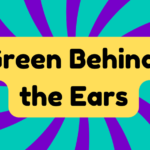The phrase "all ears" means being fully attentive and engaged in a conversation. Originating in the 18th century, it highlights the importance of listening. For example, one might say, "I'm all ears for your new ideas." This expression implies a genuine interest in what someone else has to share. Understanding its synonyms and collocations deepens comprehension of attentive listening. There's more to explore about its relevance in today's communication landscape and how it impacts interactions.
Synonyms
The phrase "all ears" translates to being fully attentive and engaged in a conversation. Understanding its synonyms enhances communication, as varied vocabulary enriches dialogue. For those enthusiastic to improve their active listening techniques and effective communication tips, consider these alternatives:
- Attentive
- Vigilant
- Lively
- Careful
- Engaged
Recognizing these synonyms promotes a deeper grasp of attentive listening. However, one must remember that simply using different words does not guarantee effective engagement. It is essential to maintain genuine interest, ensuring that one truly embodies the essence of being "all ears," rather than merely cycling through synonyms without meaningful intent.
Example of Sentences
Listening is an essential skill that often seems undervalued in everyday conversations. Emphasizing one's "all ears" status can enrich engaging conversations, fostering deeper connections and understanding. Here are some illustrative sentences:
- Kids in class were all ears during the story.
- Her fiancé expected her partner to be all ears regarding wedding plans.
- The grandfather's adventure story captivated everyone; they were all ears.
- The announcement of lottery results had him all ears with purchased tickets.
- An audience was all ears when the prime minister began his speech.
These examples underscore the importance of listening skills in creating meaningful exchanges.
Origin
Ears have long been considered essential not just for hearing but also for understanding and engaging in meaningful conversations. "All ears" emerged in the 18th century, reflecting a time when attentive listening was valued in interpersonal exchanges. This phrase holds cultural significance, highlighting how historical context influences communication. Its use suggests that active engagement requires not just physical presence but a willingness to listen deeply.
| Cultural Insight | Historical Influence | Emphasis on Engagement |
|---|---|---|
| Attentive listening | 18th-century value | Focus on the speaker |
| Interpersonal focus | Evolving language | Active participation |
| Recognition of intent | Context matters | Building connection |
Collocations
Collocations provide insight into how language is used contextually, particularly in phrases like "all ears." This idiom often pairs with verbs and adjectives that emphasize attentiveness or active listening, such as "be," "remain," and "sound," which not only enhance the phrase's meaning but also illustrate its practical application in everyday conversations.
- Be all ears for new ideas
- Remain all ears during discussions
- Sound all ears when feedback is given
- Feel all ears with genuine interest
- Stay all ears to foster connections
These combinations contribute to a culture of attentive engagement and reflect a commitment to effective communication in any setting.
How to Use in Everyday Language
Effective communication often hinges on one's ability to convey attentiveness, and the idiom "all ears" serves as a perfect example of how to express this quality in everyday language. To enhance listening skills, individuals can integrate this phrase into conversations, indicating they are ready for active engagement. For instance, during discussions or meetings, saying "I'm all ears" can signify openness to new ideas. Yet, it is vital to accompany this phrase with genuine interest; merely stating it without real engagement may come across as insincere. Ultimately, using "all ears" effectively reflects a commitment to meaningful dialogue.
Why Is It Still Relevant Today?
In today's fast-paced world, the phrase "all ears" continues to hold significance, even amidst the distractions of modern technology. This relevance highlights the importance of effective communication styles that prioritize active listening. As people navigate complex interactions, expressing that one is "all ears" signifies not just attention, but genuine engagement in conversations. With the decline of face-to-face communication, this phrase encourages a return to deeper connections. It reminds individuals of the value of truly hearing one another, fostering understanding in a society often dominated by superficial discussions. Consequently, it remains a potent reminder of the enduring need for attentive engagement.







